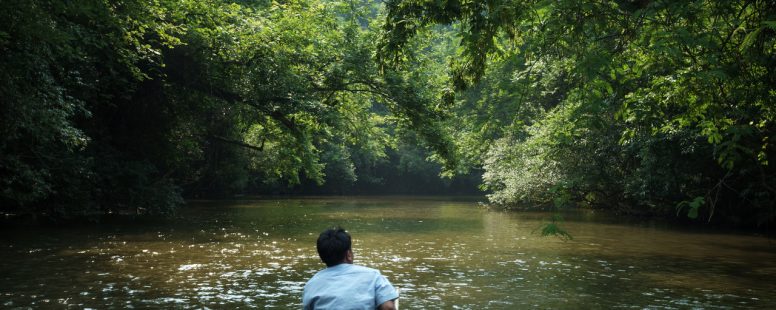Ecotourism in Laos
For the summer of 2016, my fieldwork was set in North East Lao PDR at the Nam Et-Phou Louey (NEPL) National Protected Area. This protected area is roughly 4,229 km2 and is home to a number of endangered species such as the tiger, gaur, Sambar deer, and white-cheeked gibbon. Wildlife Conservation Society, an INGO aimed at “saving wildlife and wild places,” is the main actor involved with the conservation and protection of NEPL’s wildlife and biodiversity. What initially sparked my interest in researching this area was the launch of an ecotourism program in 2009 for viewing wildlife. This program is a Payments for Ecosystem Services (PES) scheme that aimed to conserve wildlife and provide an additional source of income for rural villagers. At the time, this ecotourism program was the only way for foreigners and Lao citizens to officially enter the protected area. Though in 2016, WCS created two new ecotourism treks that entered different areas of NEPL, providing tourism-generated income for more villages. Due to the unpredictability of wildlife seen on tour in these areas, WCS implemented infrared camera-traps at different locations in the protected area to passively photograph animals for ecotourists to see during their scheduled tour. After learning about this, I decided to fly out to the Lao PDR to test these new tours and to begin interviewing villagers and employees working for the project.
During my first month in the field, the tour company I had previously worked with was invited, along with two other tour companies, to do an official survey of their latest program: The Nests. To take advantage of this opportunity, I also scheduled a tour of their flagship program: The Nam Nern Night Safari. Gaining this type of access early on in my fieldwork was due to my previous employment experience at Tiger Trail, a widely known tour company based in Luang Prabang. The WCS team was delighted to have us along to take photographs and interview villagers on camera, including our use of a drone for aerial imagery of the surrounding landscape.
While participating on these two tours, I had to put on two different hats. I was responsible for taking photos and writing up marketing material for Tiger Trail, and I also planned to interview local employees about the program and its purported benefits. My colleague and I took photos and interviewed employees on film. The end result of this experience, including three additional weeks of post-production work, was a 3-minute film aimed at promoting ‘nature’ in Laos and wildlife inside the protected area.
The title sequence, “We Love Nature,” may be tongue-in-cheek for many political ecologists, especially those critical of the false nature-society dichotomy. However, this dualism is unfortunately common and continuously perpetuated in the marketing of a destination such as the Lao PDR for the tourism industry. The video was not created to be a critique of project or protected area, but as a promotional video to attract international tourists. Moreover, this video helps validate what many people perceive the Lao PDR to be — a country with an abundance of ‘nature’ and ‘wildlife’.
Critiques aside, it was an insightful opportunity to be in two contrasting type of positions as I investigated this ecotourism project, reflecting upon these types of representations of Nature during my fieldwork.


Thanks for sharing your article. It is very interesting to me. Mid-October, 2015-Mid January, 2016 I did a research on a Community Protected Area, Peam Krasoap Wildlife Sanctuary which is located in Mondoul Seima district, Toul Korki commune, Koh Kong province. Wildlife Conservation Society (WCS) was building a Conservation Center on 10 ha. of land areas to raise tortoise and crocodile. WCS planned to hire local people to take care of these wildlife. According to RFA Khmer facebook page (https://www.facebook.com/rfacambodia/videos/1275865685790955/) , over 200 tortoises (Andoek loung) were released into the raising pond on September 13, 2016. It is a kind of Payment for Ecosystem Services (PES) but WSC did not mention it and some local people understood that foreigner (local people called Farang or Barang) helped to build home for the poor when I was there. One more thing, I noticed not just WCS targeted tourism, tourism owner, Chamkar fruit tree owner and some local people seem targeted that area for tourism attractions in the forms of water storage with nice bridge building inside Chamkar fruit tree, road construction toward to the waterfall spot, and fresh fishing raising near mangrove areas. However, I was curious that local people may be afraid of losing their land to powerful people or state. That’s why they had fresh raising pond near mangrove areas and some dikes surrounded their houses. But I had no evidences on these. It was my observations.
Hi Mom Sary,
That is some interesting observations, and I would like to know more about the PES scheme. Would they give compensation in the form of building homes, direct payments, or employment opportunities?
I’ve talked with a few people at WCS and there seems to be a continued debate inside the organization on whether they should develop (eco)tourism activities or just focus on hard forms of conservation. Though I do not think it seems like they are completely going in the direction of hard conservation, and are continuing to prefer the development of tourism activities to help pay for their conservation projects.
I would also be worried about land rights regarding these projects. It’s an issue that should be investigated.
Hello Kyle,
I just visit the page again to read some articles. Regarding to your questions, I think they would provide in those forms. I will have a chance to visit my study site again because I often go to the provinces through out the country via my work. So I work closer with local community, focusing on natural resources management and livelihoods improvement. To me I agree with you, not just WCS or conservation projects going in the direction of the development of tourism, the governments also turn to develop the ecotourism in the potential areas or sites for Community Protected Areas in Cambodia. To land rights issue, it is very critical issue that must be taken into account.
To me, I just finished doing assessment on Communities Forestry in Protected Areas in Cambodia. I found that institutional governance reform related to roles and responsibilities on natural resources management between the Ministry of Environment and Ministry of Agriculture, Forestry and Fisheries are contesting on the ground because community forestry people, Provincial Department of Environment officers and Forestry Administration officers in the provinces do not have clear roles and responsibilities. There has been a little promotion on these two institutional governance reforms. So Community Forestry members, outsiders people, small operation loggers are cutting forestry in those Communities Forestry. There will be a workshop on these issues soon after the results have been finalized by the Recoftc.